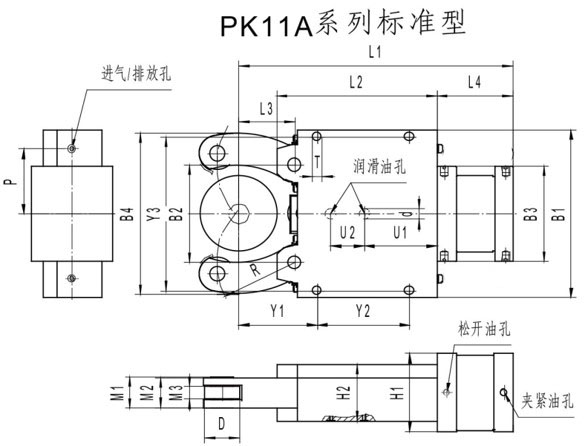- All
- Product Name
- Product Keyword
- Product Model
- Product Summary
- Product Description
- Multi Field Search
English



| Availability: | |
|---|---|
| Quantity: | |











The design of the lathe steady rest is tailored to meet the diverse requirements of these applications. The robust construction ensures that it can handle the heavy loads and forces involved in machining large workpieces. The adjustable arms are designed to be flexible enough to accommodate different shapes and sizes of workpieces, while still providing a secure and stable support.
Some of the key features that make the lathe steady rest suitable for these applications include its high load-bearing capacity. The materials used in its construction are carefully selected to withstand the forces exerted during machining. The smooth adjustment mechanism of the arms allows for quick and easy setup, reducing the time required for changing workpieces. The replaceable contact points ensure that the steady rest can be used with a variety of materials without causing damage.
The use of the lathe steady rest in these applications offers several advantages. It improves the quality and accuracy of the machined parts, reducing the likelihood of rework or scrap. It also increases the efficiency of the machining process by allowing for higher cutting speeds and feeds. Additionally, it extends the lifespan of the cutting tools by reducing the vibrations and deflections that can cause premature wear.

The design of the lathe steady rest is tailored to meet the diverse requirements of these applications. The robust construction ensures that it can handle the heavy loads and forces involved in machining large workpieces. The adjustable arms are designed to be flexible enough to accommodate different shapes and sizes of workpieces, while still providing a secure and stable support.
Some of the key features that make the lathe steady rest suitable for these applications include its high load-bearing capacity. The materials used in its construction are carefully selected to withstand the forces exerted during machining. The smooth adjustment mechanism of the arms allows for quick and easy setup, reducing the time required for changing workpieces. The replaceable contact points ensure that the steady rest can be used with a variety of materials without causing damage.
The use of the lathe steady rest in these applications offers several advantages. It improves the quality and accuracy of the machined parts, reducing the likelihood of rework or scrap. It also increases the efficiency of the machining process by allowing for higher cutting speeds and feeds. Additionally, it extends the lifespan of the cutting tools by reducing the vibrations and deflections that can cause premature wear.





Q: Can the lathe steady rest be used for both metal and non-metal workpieces?
A: Yes, the lathe steady rest can be used for a variety of materials, including metals and some non-metals such as wood. However, you may need to adjust the contact points or the pressure of the arms depending on the material being machined.
Q: How do I choose the right size of the steady rest for my workpiece?
A: You should consider the diameter and length of your workpiece. Select a steady rest that can accommodate the maximum diameter of your workpiece and has sufficient reach to support the length as required. It is also advisable to refer to the product specifications for guidance.
Q: Is it possible to use multiple steady rests on a single workpiece?
A: In some cases, especially for very long or large workpieces, it may be necessary to use multiple steady rests. This can provide additional support and improve the stability of the workpiece during machining. However, proper alignment and adjustment of the multiple steady rests are crucial.
Q: Can the lathe steady rest be used for both metal and non-metal workpieces?
A: Yes, the lathe steady rest can be used for a variety of materials, including metals and some non-metals such as wood. However, you may need to adjust the contact points or the pressure of the arms depending on the material being machined.
Q: How do I choose the right size of the steady rest for my workpiece?
A: You should consider the diameter and length of your workpiece. Select a steady rest that can accommodate the maximum diameter of your workpiece and has sufficient reach to support the length as required. It is also advisable to refer to the product specifications for guidance.
Q: Is it possible to use multiple steady rests on a single workpiece?
A: In some cases, especially for very long or large workpieces, it may be necessary to use multiple steady rests. This can provide additional support and improve the stability of the workpiece during machining. However, proper alignment and adjustment of the multiple steady rests are crucial.
